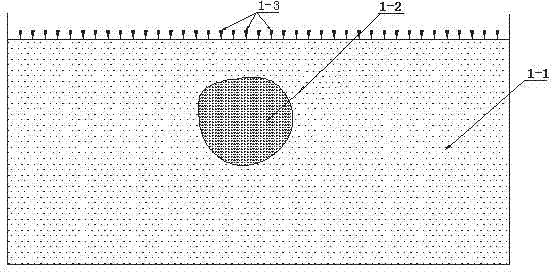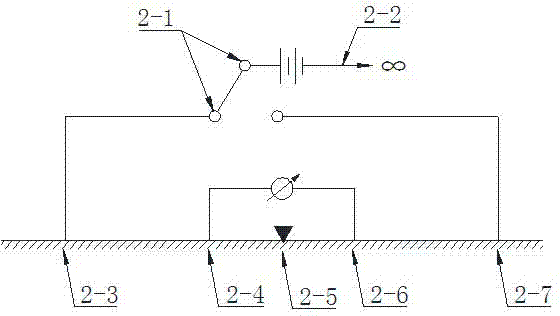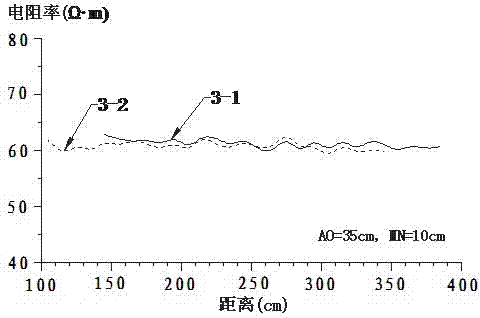Method for positioning constructed wetland blocked region through composite profiling apparent resistivity curves
A technology combining profile and apparent resistivity, applied in the field of sewage treatment to achieve efficient operation
- Summary
- Abstract
- Description
- Claims
- Application Information
AI Technical Summary
Problems solved by technology
Method used
Image
Examples
Embodiment 1
[0029] Constructed wetland without clogging combined with cross-sectional apparent resistivity measurement.
[0030] (1) if figure 1 , 2 As shown, firstly, the joint profile device is arranged at the electrode layout point 1-3 of the laid joint profile survey line for measurement, the distance between the measuring electrode M2-4 and the measuring electrode N2-6 is 10 cm, and the positive pole of the power supply electrode is A pole 2-3 and The B pole 2-7, the negative electrode of the power supply electrode is the C pole 2-2 of "infinity".
[0031] (2) Arrange the "infinity" C pole 2-2, the C pole is arranged perpendicular to the direction of the survey line, and the distance from the survey line is 200cm.
[0032](3) Arrange A pole 2-3 and B pole 2-7 according to AO=35cm (filling depth of constructed wetland example is about 100cm). Observe twice, one time is AMN device, the positive pole of the power supply is connected to the A pole 2-3, and the negative pole of the pow...
Embodiment 2
[0037] Combined section apparent resistivity measurement of constructed wetlands with clogged areas.
[0038] (1) if figure 1 , 2 As shown, firstly, the joint profile device is arranged at the electrode layout point 1-3 of the laid joint profile survey line for measurement, the distance between the measuring electrode M2-4 and the measuring electrode N2-6 is 10 cm, and the positive pole of the power supply electrode is A pole 2-3 and The B pole 2-7, the negative electrode of the power supply electrode is the C pole 2-2 of "infinity".
[0039] (2) Arrange the "infinity" C pole 2-2. The C pole should be arranged perpendicular to the direction of the survey line, and the distance from the survey line should be 200cm.
[0040] (3) Arrange A pole 2-3 and B pole 2-7 according to AO=35cm (filling depth of constructed wetland example is about 100cm). Observe twice, one time is AMN device, the positive pole of the power supply is connected to the A pole 2-3, and the negative pole of...
PUM
 Login to View More
Login to View More Abstract
Description
Claims
Application Information
 Login to View More
Login to View More - R&D
- Intellectual Property
- Life Sciences
- Materials
- Tech Scout
- Unparalleled Data Quality
- Higher Quality Content
- 60% Fewer Hallucinations
Browse by: Latest US Patents, China's latest patents, Technical Efficacy Thesaurus, Application Domain, Technology Topic, Popular Technical Reports.
© 2025 PatSnap. All rights reserved.Legal|Privacy policy|Modern Slavery Act Transparency Statement|Sitemap|About US| Contact US: help@patsnap.com



